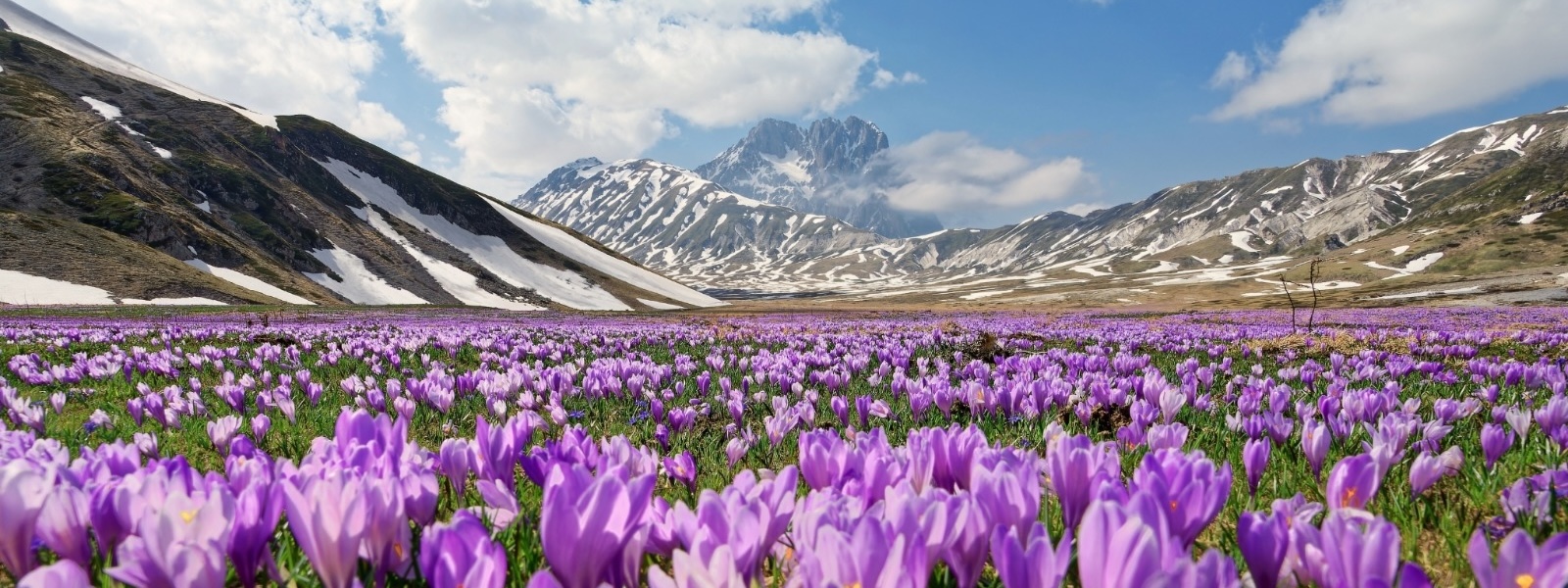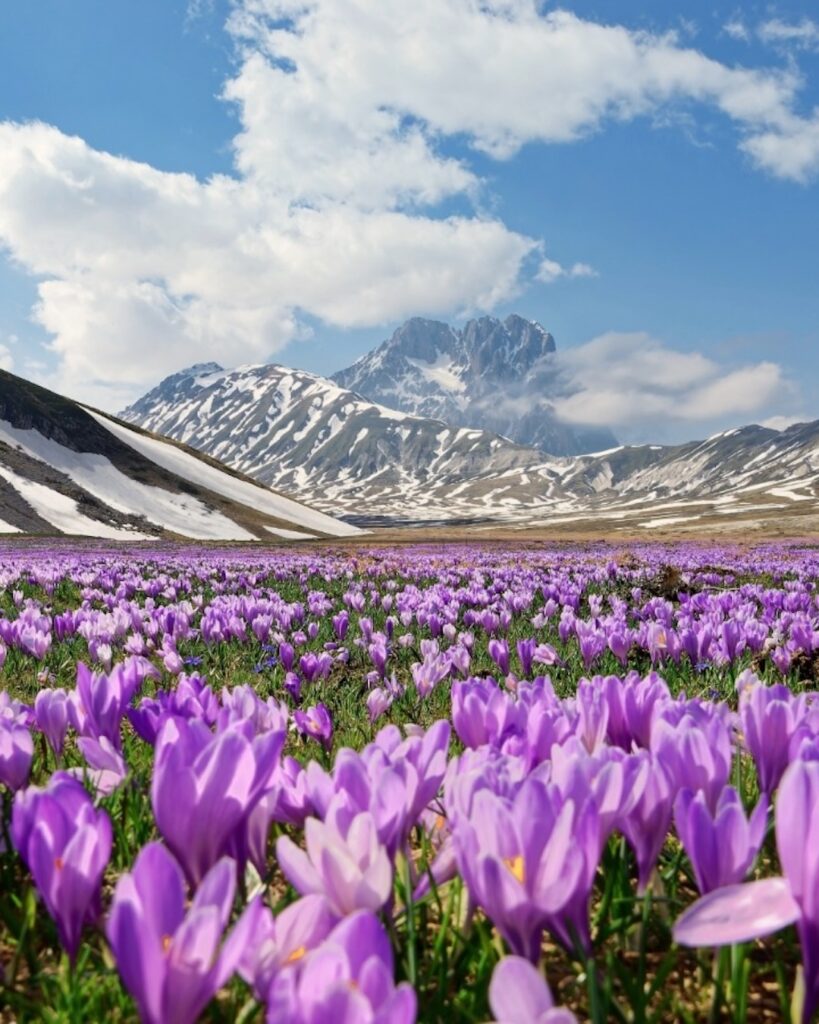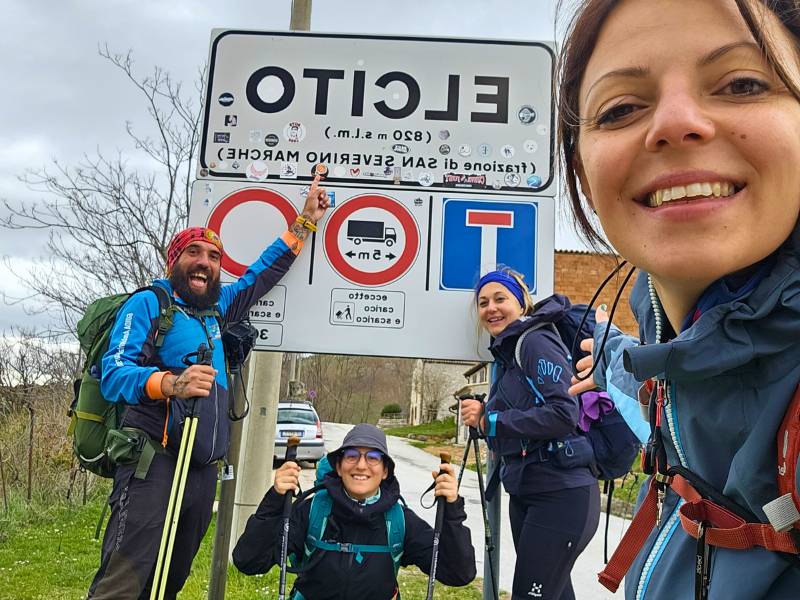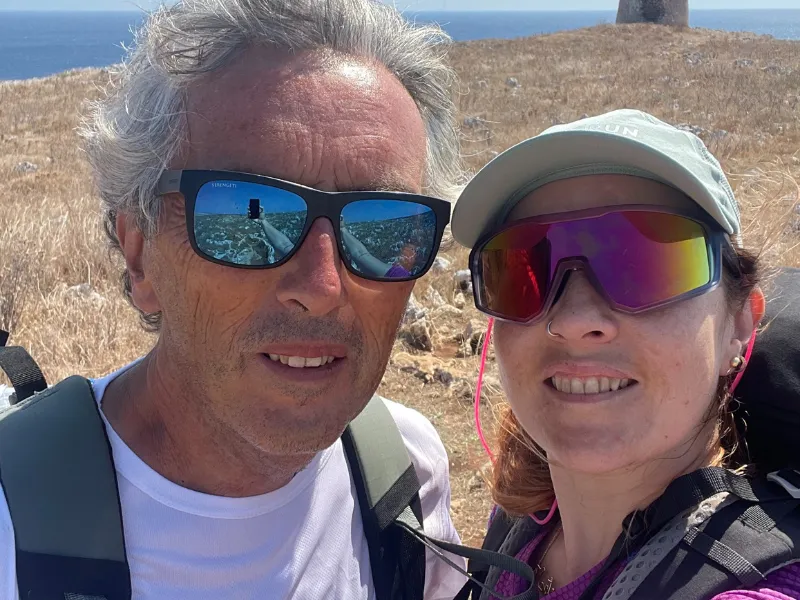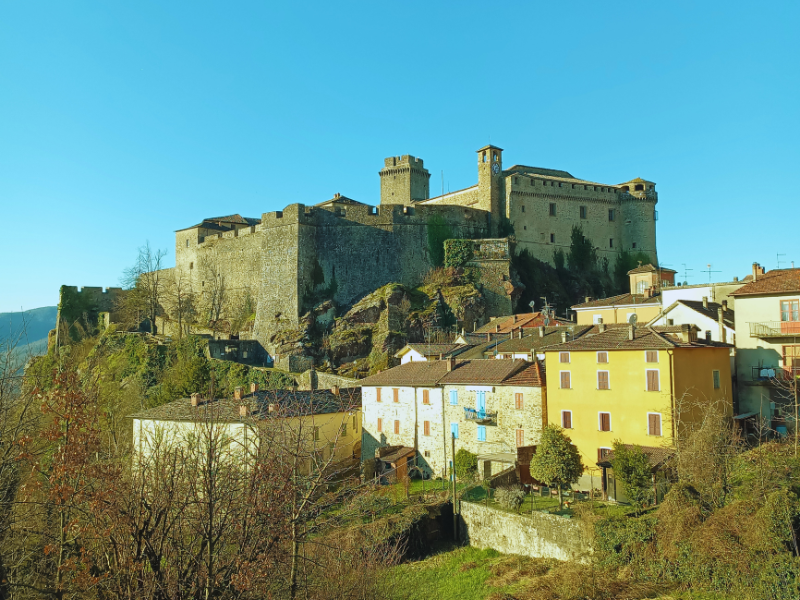A walk among mountains, ancient villages and authentic flavors. The Cammino del Gran Sasso is the brainchild of three friends to enhance an extraordinary territory of Abruzzo, combining nature, culture and good food. Five looped STAGES lead through wild landscapes and villages stopped in time such as Rocca Calascio and Santo Stefano di Sessanio, offering walkers traditional dishes and unique products such as Canestrato di Castel del Monte. An experience that nourishes body, mind and spirit, and is breathing new life into local communities.
Every walk is made up of many aspects. There is the naturalistic and scenic one in which we find ourselves immersed, which fills our eyes as we walk it; there are the cultural and social aspects, which enrich us as we discover worlds different from our own, through the history of the places, the people who inhabit them and those we meet on the way, moving as we do. For many there is the spiritual aspect, which digs deep day after day into a different dimension yet connected to our daily lives, and the physical aspect, of contact with one’s own body that becomes the means through which the journey is possible.
At the crossroads of all these aspects, there is also food and wine, in which the products of the land we pass through, cultivated and prepared by local people according to more or less ancient traditions, nourish a tired and hungry body and at the same time restore the curious mind and the searching spirit. Whether or not we also experience it as a vehicle for satisfaction and discovery, food is like rest something fundamental to us. Thus was born a series of articles dedicated to delving into the food and wine aspects of so many of our Italian Camminos, each with its own specificities and tidbits to discover.
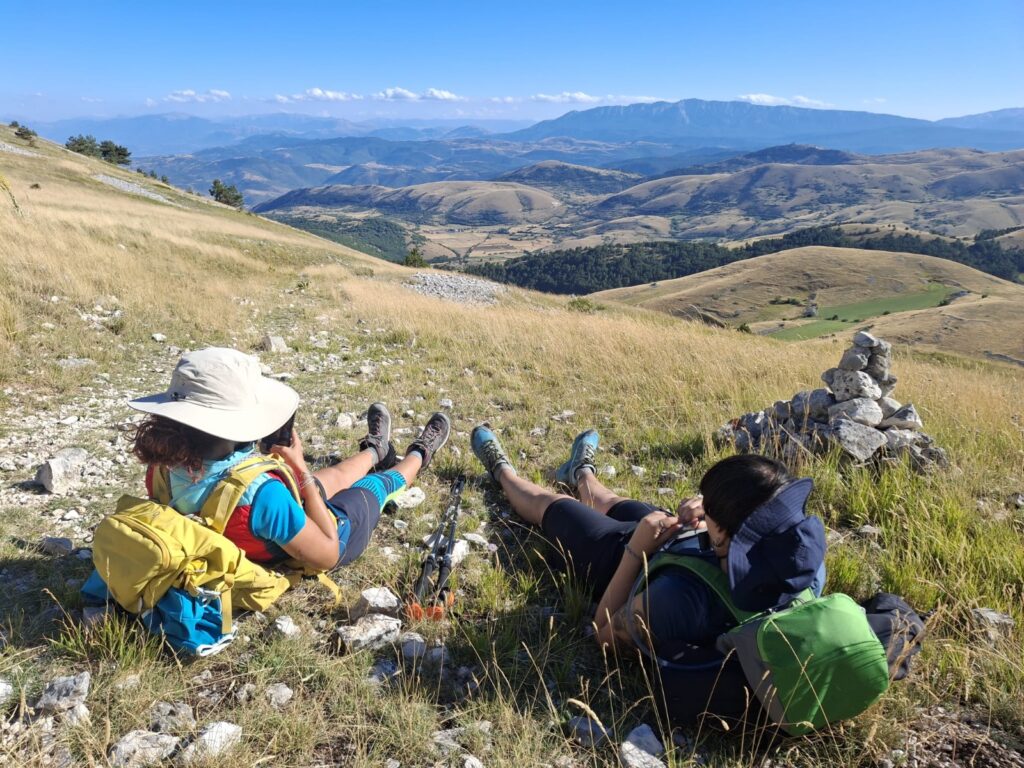
The Cammino del Gran Sasso: born from the idea of three friends to enhance the territory
This first episode we dedicate to the Cammino del Gran Sasso , a mountain walk in Abruzzo that was the brainchild of three friends and partners, two mountain guides and a tour guide, who wondered what was missing in their area to make the most of it. “We realized that a path was really missing,” says Federico. The idea from the beginning was to engage the local fabric so as to provide employment opportunities for the community, avoid growing emigration, and lead to a more open society. “We are now in our third year and have gained more credibility and trust from the locals.”
After a study of the area and possible STAGES-which now number 5-Federick and the others began to ask questions. “What do walkers need?” they asked themselves. Of sleep, of food, of basic services. And then, to follow, even ancillary ones, from credentials, to luggage transport. “Next year,” he says, “we will also offer a guidebook and a dedicated bicycle route, which are lacking now.
The current looped walk is designed to be usable by as many people as possible, and it begins at Fonte Cerreto, at the base of the Gran Sasso cable car in the municipality of L’Aquila. After a longer first STAGE of about 22 km, obligatory since there is nothing in between except the nature of Campo Imperatore and the Scoppaturo Canyon, the subsequent stages are shorter and pass through picturesque villages such as Rocca Calascio, Santo Stefano di Sessanio, and Barisciano, and then return to the starting point, with accommodation services totaling more than a thousand beds, a rich variety of restaurants and guided tours. Can not miss, of course, the local food with its excellence.
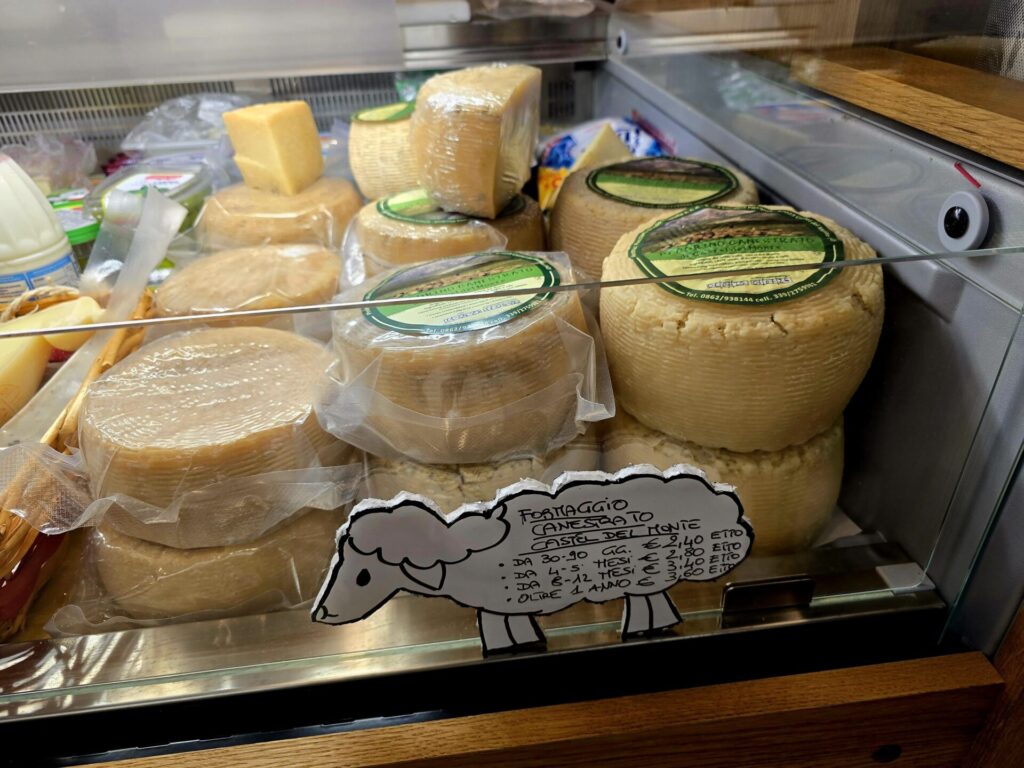
Lunch on the first STAGE, a taste of all the local excellence
During the first STAGE, the Cammino proposes and prepares for walkers a lunch with almost zero-mile products: pecorino cheese, local cured meats, grains and legumes grown in the area-the lentil of Santo Stefano di Sessanio, which is now also a Slow Food Presidium, chickling peas, spelt-cooked and flavored with herbs such as savory and helichrysum, tarts made with the flours of solina and rosciola, ancient grains resistant to high altitude, which were the product of an agriculture once subsistence, and now of high quality.
Local farmers and ranchers have realized the potential of this path. “Spelt is grown at 1350 meters in the Piano delle Locce, along with all the cultivars in our area, in the only fenced area on the entire walk. Along with solina and rosciola, we use them to make bread with which to accompany cheeses and cured meats, and tarts,” Federico explains. And again, there is the turquoise potato, semi-sweet, among those imported from America after the 16th century, and never selected industrially.
Walkers are asked for preferences and intolerances, but a dry soup of grains and lentils is usually offered, or farro with vegetables from the garden at that time, sun-dried tomatoes, Castel del Monte pecorino cheese with bread, and Solina or cicolana walnuts.

The products of the Cammino del Gran Sasso: Canestrato di Castel del Monte, DOP, and cured meats
Among the products not to be missed are definitely cheeses, especially pecorino made from the milk of local animals. The product of excellence is Canestrato, DOP, “made from the milk of the sheep that you meet on the first day, passing through Campo Imperatore, where they graze from spring to autumn with Abruzzo shepherds and guard dogs.” They eat the grass of the
If you are not a vegetarian, you must try Cicolana, a horseshoe-shaped salami that is made from the meat of Castel del Monte pork, the small, black, very cold-hardy pig of Abruzzo, whose meat is particularly tasty. “Among the most popular products,” says Federico, “is then the liver Cicolana. In the last few towns, you can also find the typical L’Aquila crushed salami, which has an elongated section because, during curing, a weight is placed on top of it to aid the process and keep the meat firm.
To accompany these products is Cerasuolo d’Abruzzo, with its notes of sour cherry, the wild cherry, also excellent for pairing with white meats or fish. “At the arrival of each STAGE, next to the stamp, a glass of wine can never be missing!” says Federico.
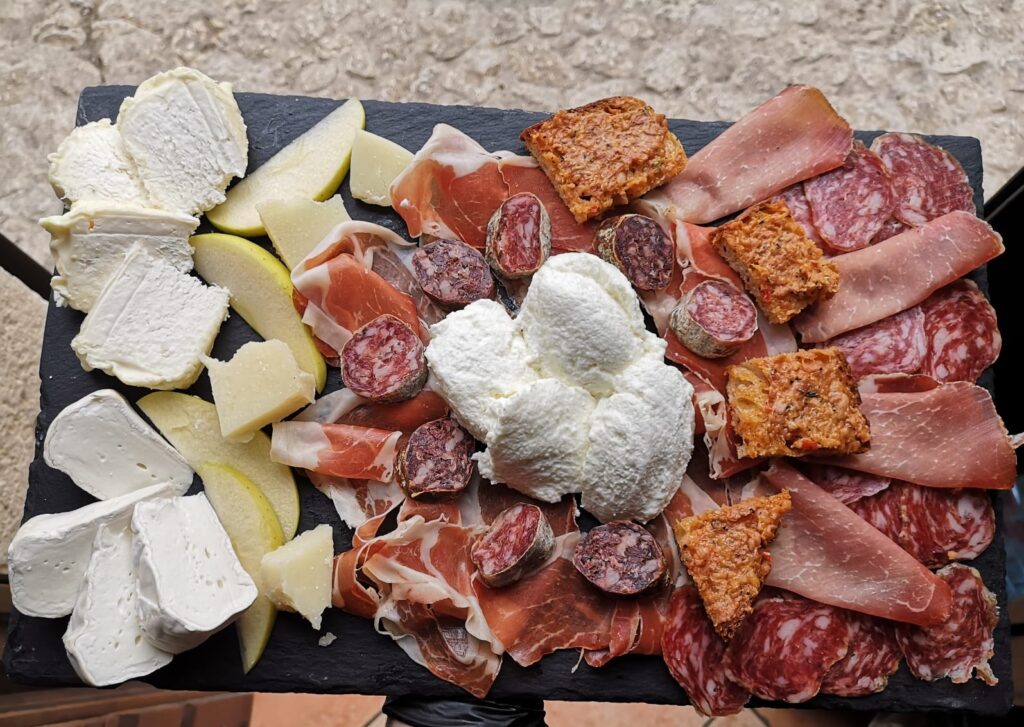
Where to eat on the Cammino del Gran Sasso: restaurants, stores and goodies
There is a section on the Camino page devoted to restaurants, where those that have believed in the walk since the very first year are listed, but we got some recommendations for all tastes and budgets, as new places have opened in the meantime that are worth a stop.
In Castel del Monte you can eat at the “Albergo Parco Gran Sasso,” whose restaurant is run by Ms. Loredana, who offers lots of fresh pasta dishes. In the center reopened this year “Mariannina,” an emporium run by two sisters who offer for sale their shepherd brother’s products, including exceptional pecorino cheese. “This is the old market run by their mother 30 years earlier: after a period outside the village, they decided to take over the premises in the old village again, thanks in part to the Cammino.”
In Rocca Calascio “La Taberna” offers arrosticini and pallotte cacio e ova to remember, while in Calascio the “Bar del Falco,” also run by two sisters, one of whom is a sommelier, offers wine tastings and samples with local goodies that, they assure, you won’t find elsewhere. Also in Calascio, for lunch you can stop by “Pane&Vino,” a store in the heart of the upper town’s historic center that offers tasty focaccia.
In Santo Stefano di Sessanio there is a small restaurant, “Elisir del Poeta,” which offers vegan cuisine that will not disappoint carnivores. Also recommended are “Locanda sul Lago” and “Il Palazzo,” as well as “Cuore Nero,” which specializes in truffles.
In Barisciano you can choose between the “Monte Selva” restaurant, a classic, or the home restaurant “La Tricagliese,” which offers only 8 seats, however, and therefore must be reserved. Apparently, wine flows like wildfire there! Before completing the last STAGE, an hour from the end, there is “Rifugio Montecristo,” now under new management, which offers a treat you won’t find elsewhere: melted pecorino cheese with honey and almond slivers and a very delicate sheep carpaccio.
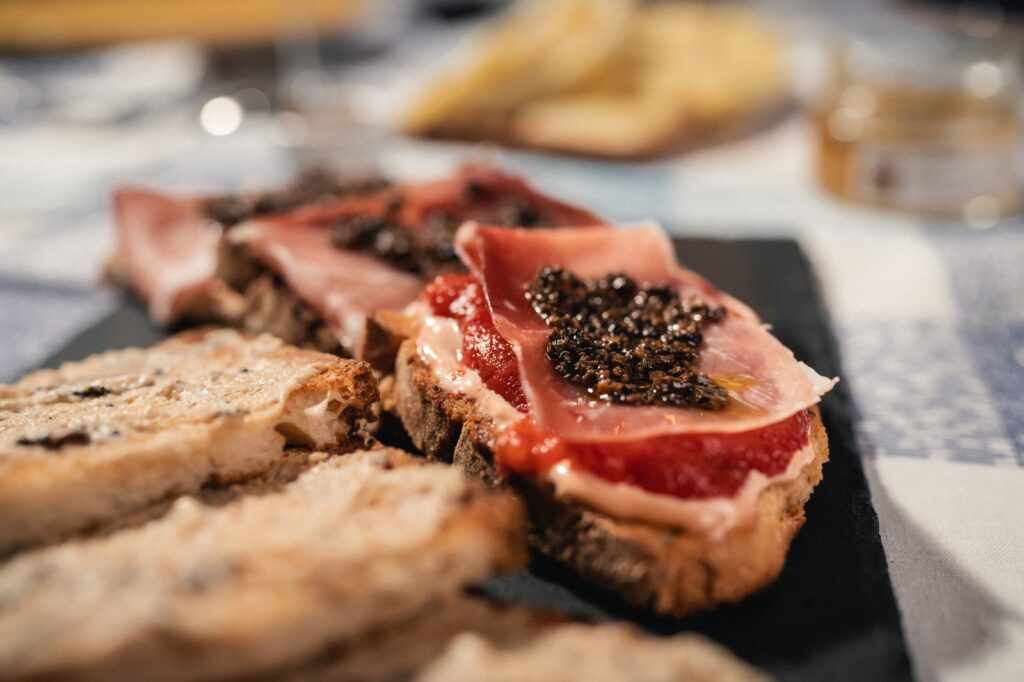
Where to Sleep on the Cammino del Gran Sasso
There are no donations on the Cammino del Gran Sasso, but small, well-maintained hotels and b&b’s that are part of a restructured urban fabric that retains the medieval soul thanks to the very few more modern-style buildings. To maintain it, anthropologists have been brought in to help engineers and architects renovate, for example, the oldest part of Castel del Monte, Calascio and Santo Stefano, so as to recover closets, beds and furnishings consistent with those of the period. “We don’t have conventions for walkers, but in general the prices are quite low. In Santo Stefano, the exception is the first Albergo Diffuso hotel in Italy, the “Sextantio Albergo Diffuso,” where a night can cost 300 euros-some people during the walk choose to treat themselves.”
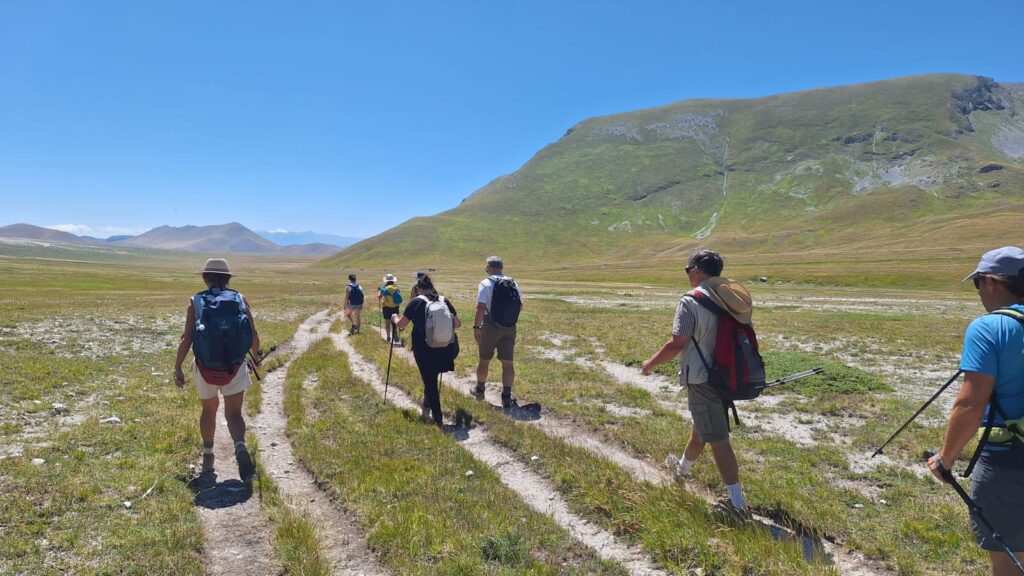
The Cammino del Gran Sasso and the new life of the territory
That of Gran Sasso, a National Park established in 1991, remains to this day one of the areas with the greatest plant biodiversity in Europe, with about 2,300 species. “Here nature is still wild, because there are only a few of us and there has not been mass anthropization as has happened in many alpine places.” And tradition is joined by new possibilities: if previously shepherds had a cost to dispose of wool, now it has become a profit thanks to the Pecunia Project, sponsored by the park and carried out by women who have rediscovered an art carried on from the Middle Ages to the late 19th century, including washing, carding, spinning and finally dyeing wool, with the park’s medicinal herbs. “Today, by law, wool cannot be washed as it used to be, so the first steps are entrusted to an outside company, but then they go back to dyeing it with the fruits of the land, obtaining a nuanced and always unique color, which gives a wool with a very different and more lively touch than industrial wool.”
By 2025, the Cammino del Gran Sasso will have hosted nearly 5,000 walkers-last year it was 3,000-and is now the fifth most searched on the portal Cammini d’Italia . The participation and effects of the Cammino have in just a few years nourished the local fabric, as Federico explains. “Take Barisciano, the town I come from, which has never had a tourist vocation because it is on the edge of the park and has therefore undergone more urbanization. In 2019 there were, along with mine, only four facilities; today there are 24.” The more the walk grows, and the area is experienced and discovered, the more the latter can in turn continue to grow, giving new possibilities to those who live year-round in these areas.
If you’ve been itching to walk the Camino, find everything you need to know in the our focus and on the website of the Cammino del Gran Sasso .
